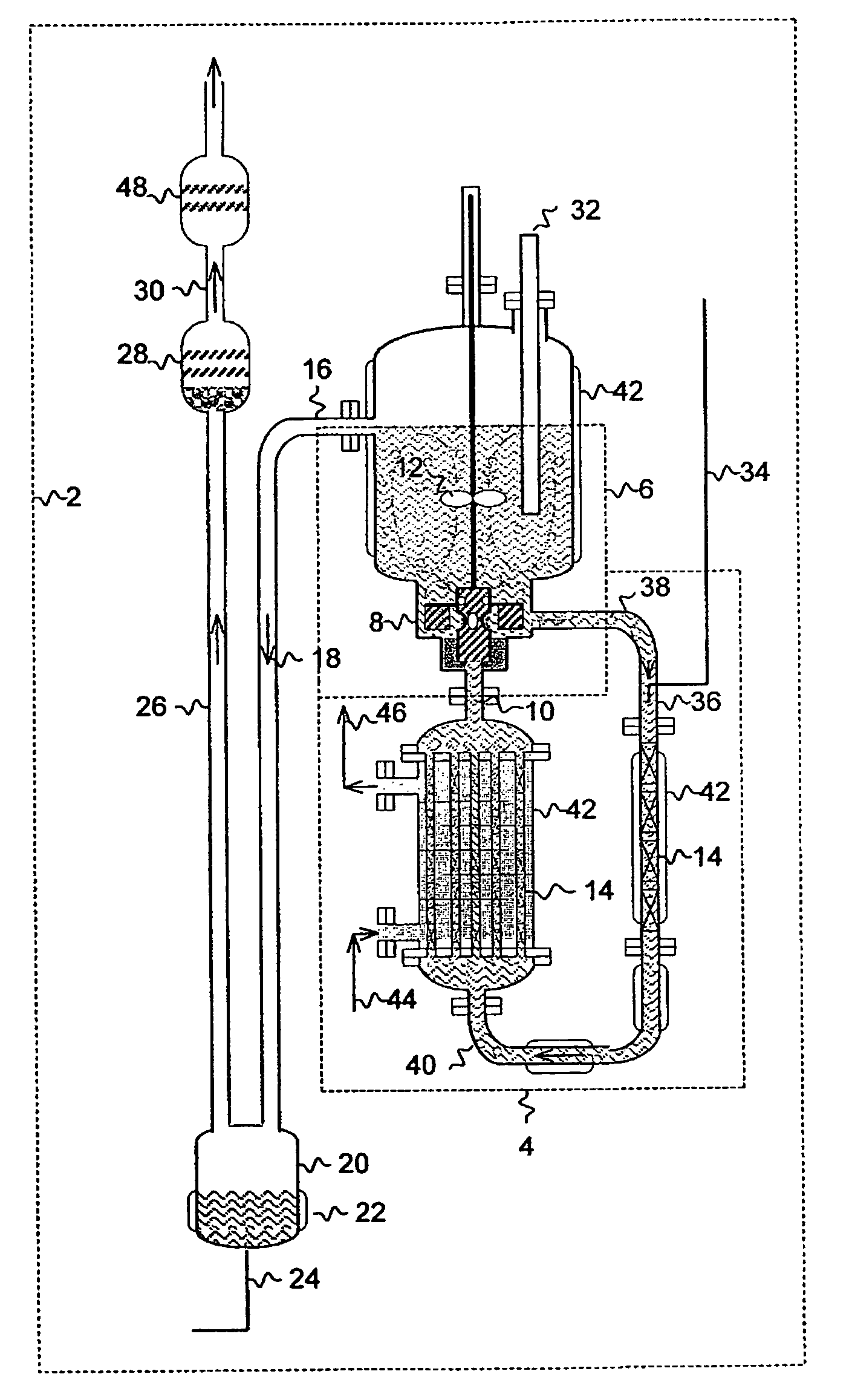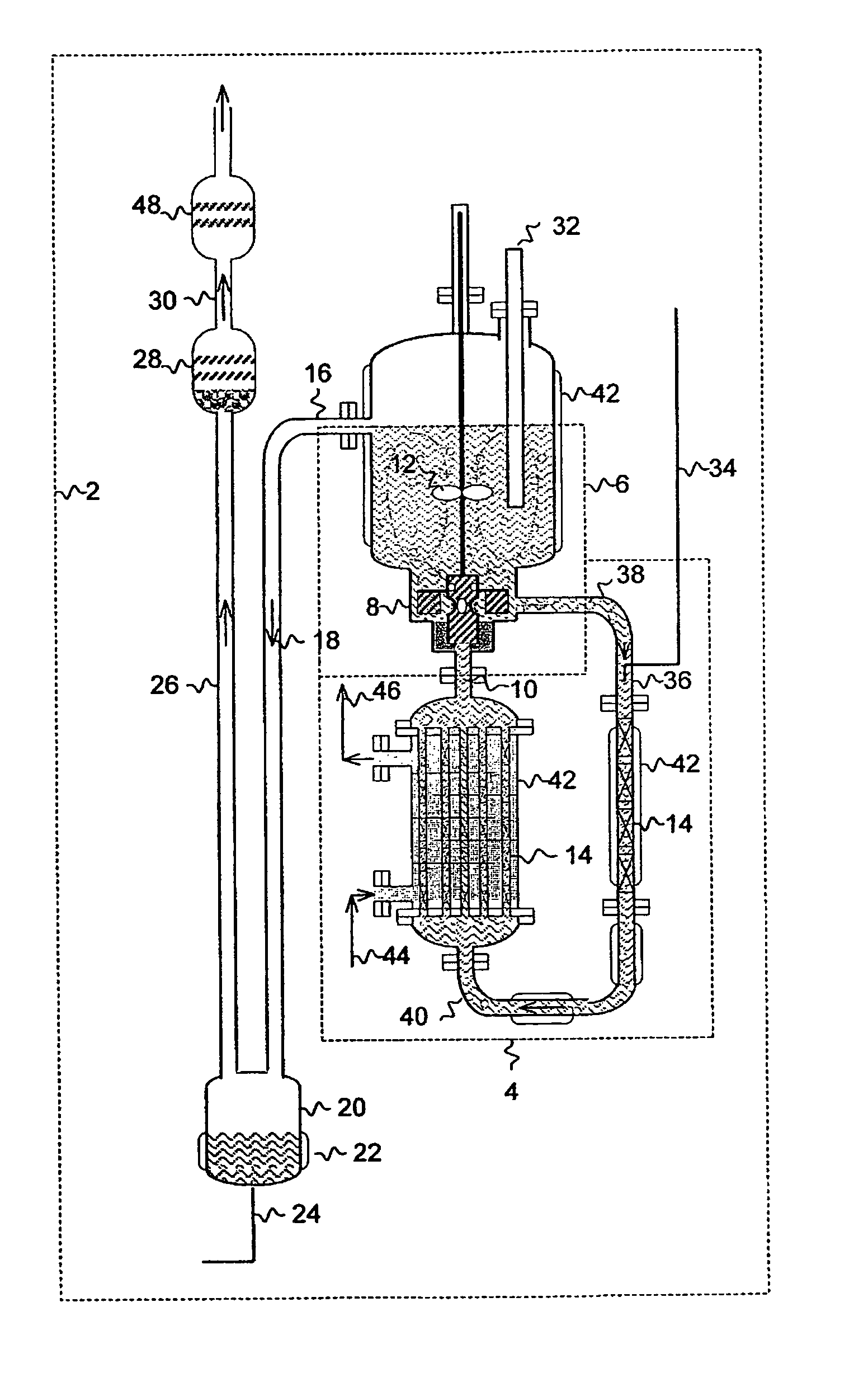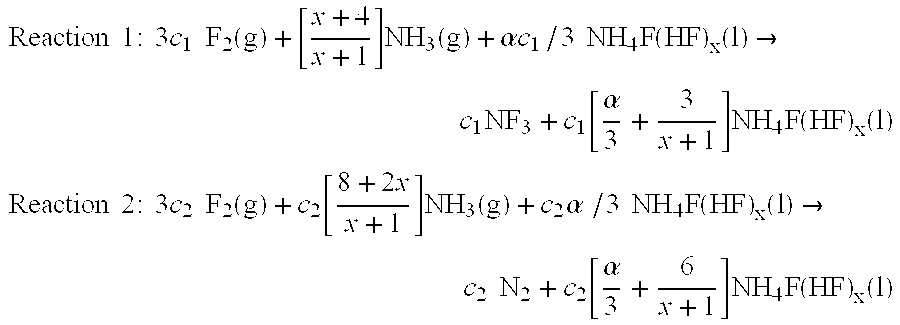NF3 production reactor
a production reactor and nitrogen trifluoride technology, applied in the direction of machines/engines, lighting and heating apparatus, separation processes, etc., can solve the problems of accelerated corrosion at the impeller tip, significant problems remain, and localized overheating, so as to reduce corrosion
- Summary
- Abstract
- Description
- Claims
- Application Information
AI Technical Summary
Benefits of technology
Problems solved by technology
Method used
Image
Examples
Embodiment Construction
[0019]The present invention is directed to a process for producing NF3 from a reaction mixture containing fluorine gas and liquid ammonium acid fluoride. As will be described below, the reaction is conducted in two reaction zones characterized as having different energy environments. The energy environment in the first reaction zone where the concentration of fluorine gas is relatively high is characterized as being a relatively low energy environment. The energy environment in the second reaction zone where the concentration of fluorine gas is less than the first reaction zone (i.e. because at least in part some of the fluorine gas has reacted in the first reaction zone) is characterized as being a relatively high energy environment.
[0020]The term “relatively high energy environment” shall mean a reaction zone in which reaction conditions and / or features of the reaction zone are selected to provide more energy at the location of the fluorine gas reactant than would appear in a rela...
PUM
| Property | Measurement | Unit |
|---|---|---|
| Temperature | aaaaa | aaaaa |
| Temperature | aaaaa | aaaaa |
| Temperature | aaaaa | aaaaa |
Abstract
Description
Claims
Application Information
 Login to View More
Login to View More - R&D
- Intellectual Property
- Life Sciences
- Materials
- Tech Scout
- Unparalleled Data Quality
- Higher Quality Content
- 60% Fewer Hallucinations
Browse by: Latest US Patents, China's latest patents, Technical Efficacy Thesaurus, Application Domain, Technology Topic, Popular Technical Reports.
© 2025 PatSnap. All rights reserved.Legal|Privacy policy|Modern Slavery Act Transparency Statement|Sitemap|About US| Contact US: help@patsnap.com



